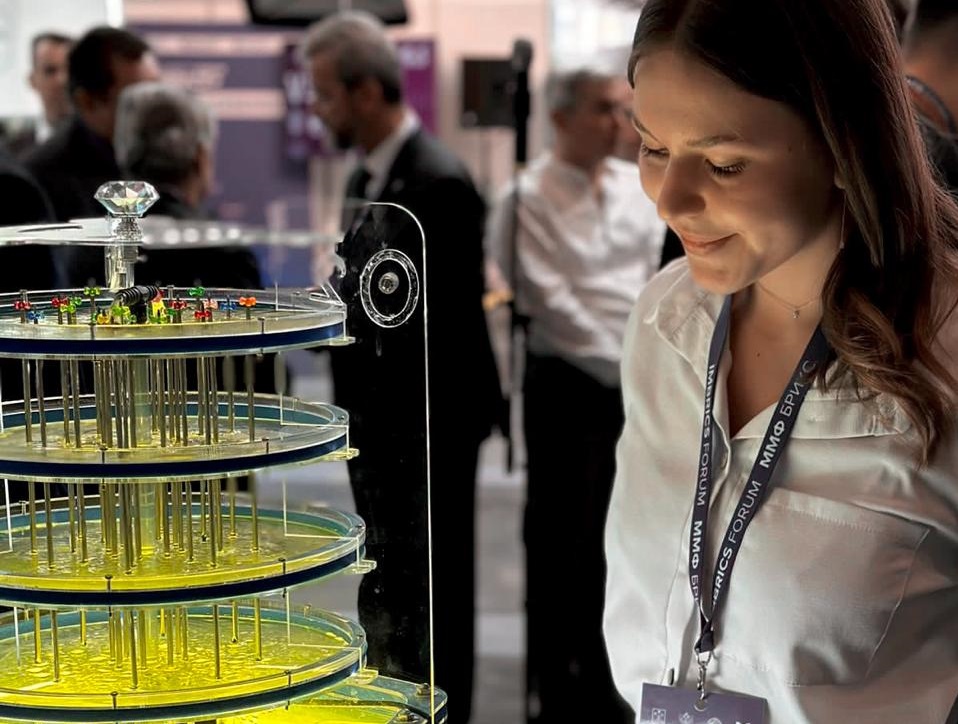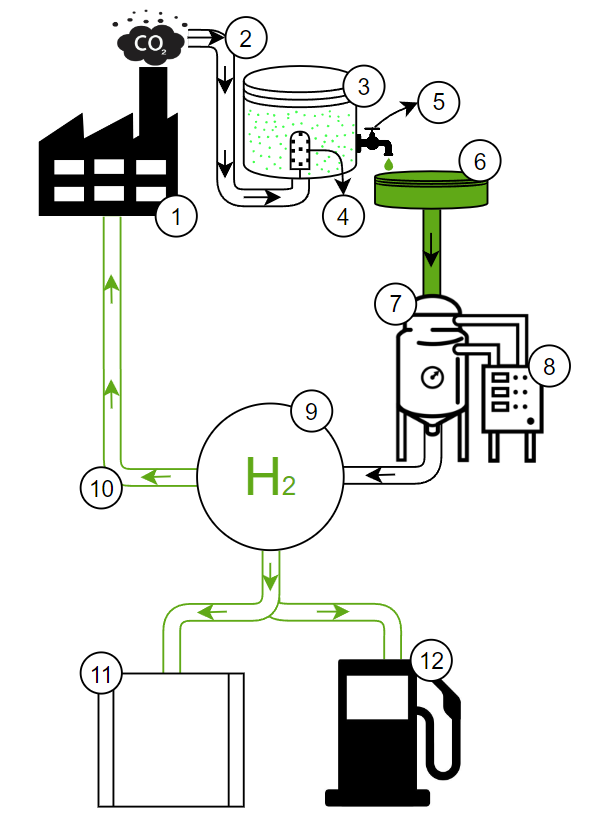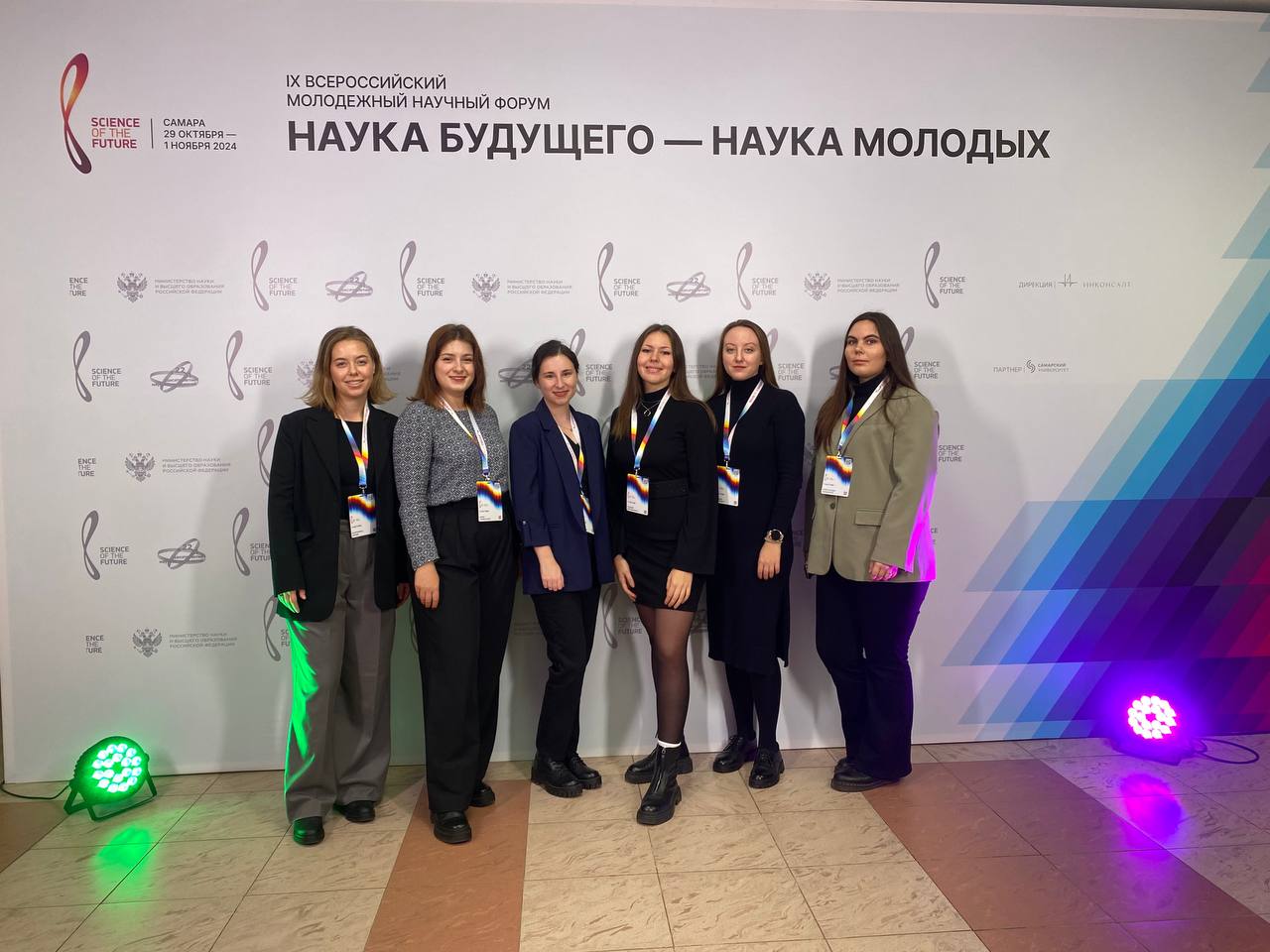
The staff of the laboratory «Interdisciplinary Research and Education on Technological and Economic Problems of Energy Transition (CIRETEC-GT)» are actively engaged in research in the field of obtaining energy resources. With the support of the head of the laboratory, prof., doctor of economic sciences Ilyin I.V. and under the supervision of senior researcher, prof., doctor of technical sciences N.A. Politaeva, research in this area is carried out by young scientists Velmozhina K.A., Zhazhkov V.V., Zibarev N.V., Oparina A.M., Shinkevich P.S.
In particular, an experimental study of the process of obtaining biogas and biohydrogen during the enzymatic fermentation of hydrogen-forming bacteria and various organic additives (microalgae biomass, starch, compound feed and brewer's grains) was conducted. Particular attention is paid to studying the use of microalgae biomass as a source of biohydrogen. The maximum amount of biohydrogen (44.24 ml/l of suspension) was obtained under conditions of anaerobic dark fermentation of Chlorella microalgae biomass. As part of the study, the analyst proposed the following scheme for integrating a bioplant for the use of microalgae in production processes to achieve sustainable development goals (Fig. 1). Emissions generated during production (1) are proposed to be conducted through a special pipe for cooling them (2), feeding them to sprayers (4) installed at the bottom of a biopond with microalgae (3). This system will ensure the most efficient supply of cooled emissions, while creating constant mixing of the microalgae biomass from the bottom of the biopond. The collection of the MBM (6) will be carried out through a special drain (5), operating intermittently (to build up the biomass). The collected biomass will be loaded into closed opaque bioreactors (7), providing conditions for dark fermentation (8), namely, ensuring an anaerobic fermentation regime, the absence of light, maintaining a temperature of T = 55 ° C, maintaining pH in the range from 5.5 to 6.5. According to literary data, the duration of this process should be from 48 hours to 72 hours. During dark fermentation, biohydrogen (9) is formed, which can then be used for various energy purposes. For example, the diagram shows the following options for its use: supplying H2 to an electrical/thermal energy converter for production (10), as fuel in hydrogen fuel cells (11), as biofuel for cars (12).

Fig. 1. Technological scheme of using microalgae for cleaning flue gases and further obtaining biohydrogen, where 1 is production, 2 is a pipe for cooling and feeding emissions, 3 is a biopond with microalgae, 4 is a sprayer, 5 is a drain, 6 is an OBM, 7 are bioreactors, 8 is a controller for ensuring dark fermentation conditions, 9 is biohydrogen, 10 is the use of H2 in production, 11 is the use of H2 in hydrogen fuel cells, 12 is the use of H2 as a biofuel for cars
Some research results in this area formed the basis for the master's thesis of laboratory analyst Ksenia Velmozhina, "Improving the technology of anaerobic fermentation of organic waste for energy purposes", which was successfully defended in 2023. But the development will continue: Ksenia continues to improve technologies in this area in graduate school.
Based on the results of the research in this area, the following scientific articles were published in highly rated journals:
1. Velmozhina, K.; Shinkevich, P.; Zhazhkov, V.; Politaeva, N.; Korablev, V.; Vladimirov, I.; Morales, T.C. Production of Biohydrogen from Microalgae Biomass after Wastewater Treatment and Air Purification from CO2. Processes 2023, 11, 2978. https://doi.org/10.3390/pr11102978 (Scopus, WoS – Q1)
2. Velmozhina K.A., Politaeva N.A., Ilin I.V., Shinkevich P.S. Review of modern strategies for the development of hydrogen bioenergy as key areas for achieving sustainable development goals // International Journal of Hydrogen Energy. 2024, 419, No. 2 (Scopus, WoS – Q1) 3. V.V. Zhazhkov, N.A. Politaeva, K.A. Velmozhina, P.S. Shinkevich, B. Kh Norov. Production of biogas from organic waste at landfills by anaerobic digestion and its further conversion into biohydrogen // International Journal of Hydrogen Energy. - 2024. - Volume 70. - P. 779-785 (Scopus, WoS – Q1)
4. Velmozhina K. A., Politaeva N. A., Ilyin I. V., Shinkevich P. S. Review of modern strategies for the development of hydrogen bioenergy as key areas for achieving sustainable development goals // Alternative Energy and Ecology (ISJAEE), 01 (418) 2024, P. 12- 16. (HAC, K1)
5. Obtaining biogas from organic waste at landfills by anaerobic digestion and its further conversion into biohydrogen / V. V. Zhazhkov, N. A. Politaeva, K. A. Velmozhina [et al.] // International scientific journal Alternative Energy and Ecology. – 2023. – No. 11 (416). – P. 99-113. – DOI 10.15518/isjaee.2023.11.099-113. (VAK, K1)



